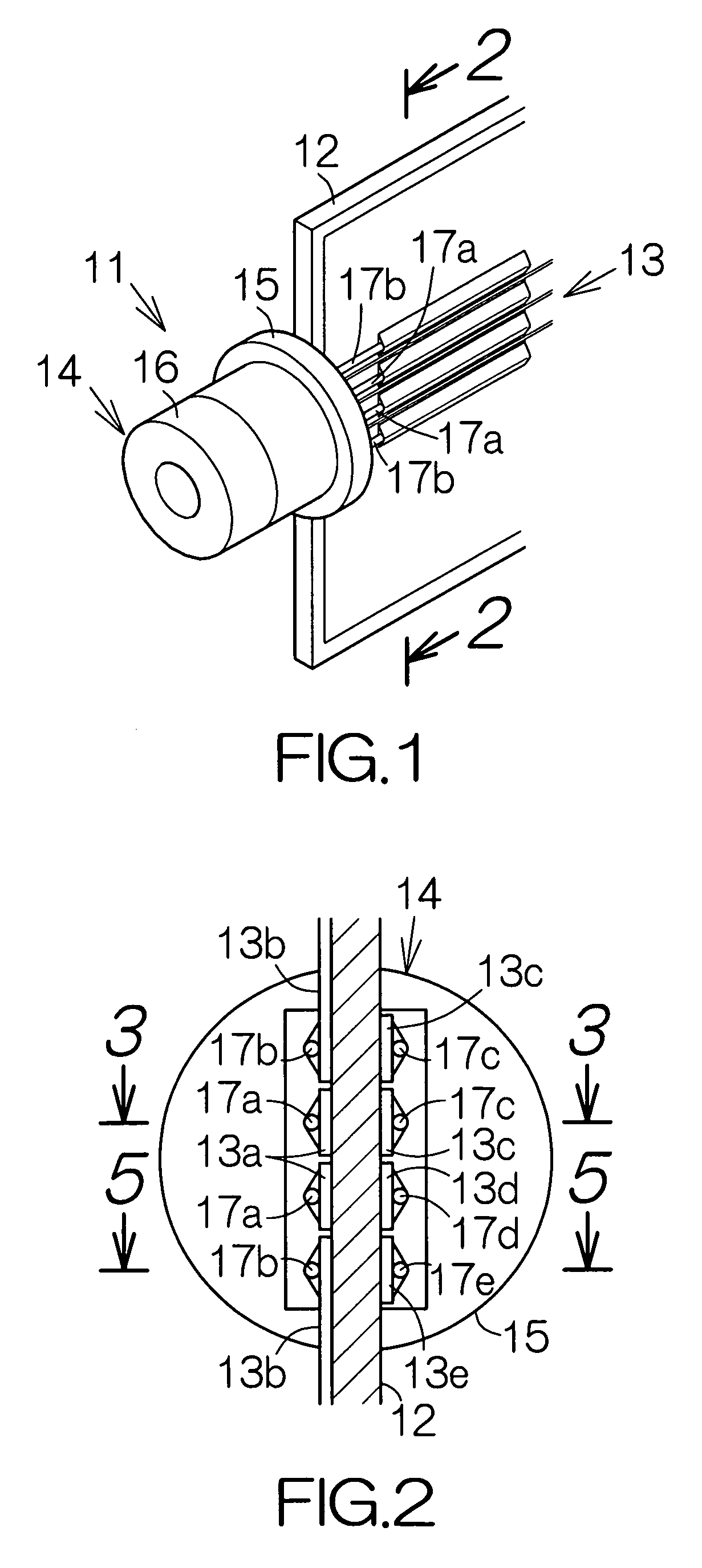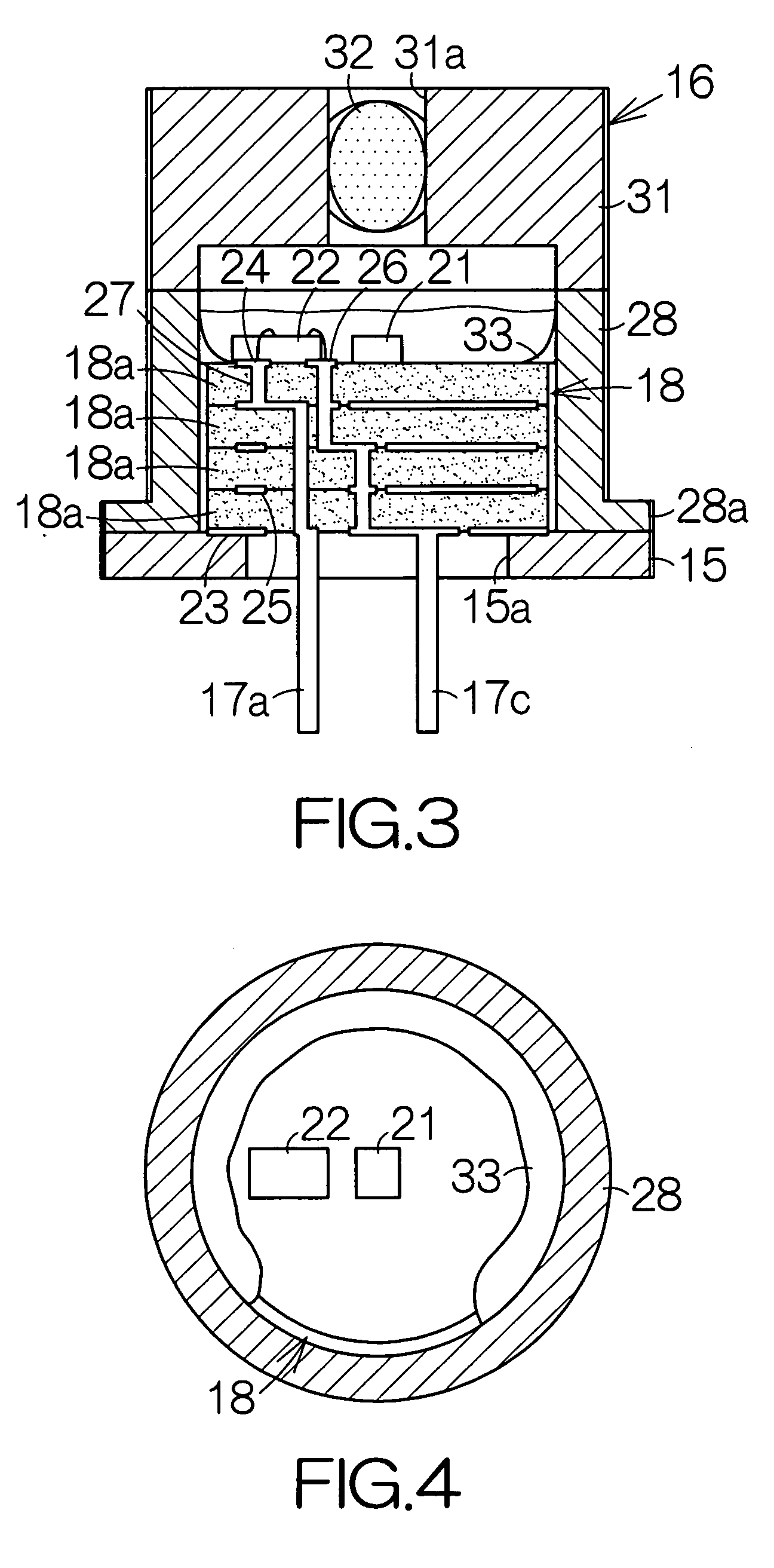Receiver optical sub-assembly and optical receiver module
- Summary
- Abstract
- Description
- Claims
- Application Information
AI Technical Summary
Benefits of technology
Problems solved by technology
Method used
Image
Examples
Embodiment Construction
[0029]FIG. 1 schematically illustrates an optical receiver module 11. The optical receiver module 11 includes a printed wiring board 12 contoured in a rectangle, for example. Wiring patterns 13 are formed on the front surface of the printed wiring board 12 and the back surface, not shown, of the printed wiring board 12. The front and back surfaces of the printed wiring board 12 extend in parallel with each other. The printed wiring board 12 defines four end surfaces perpendicular to its front and back surfaces. The four end surfaces connect the front and back surfaces to each other. A receiver optical sub-assembly (ROSA) 14 according to a first embodiment of the present invention is attached to one of the end surfaces of the printed wiring board 12.
[0030]The receiver optical sub-assembly 14 includes a base 15 in the form of a disk. The base 15 is superposed on the end surface of the printed wiring board 12. The base 15 takes an attitude intersecting the printed wiring board 12. Here...
PUM
 Login to View More
Login to View More Abstract
Description
Claims
Application Information
 Login to View More
Login to View More - R&D
- Intellectual Property
- Life Sciences
- Materials
- Tech Scout
- Unparalleled Data Quality
- Higher Quality Content
- 60% Fewer Hallucinations
Browse by: Latest US Patents, China's latest patents, Technical Efficacy Thesaurus, Application Domain, Technology Topic, Popular Technical Reports.
© 2025 PatSnap. All rights reserved.Legal|Privacy policy|Modern Slavery Act Transparency Statement|Sitemap|About US| Contact US: help@patsnap.com



